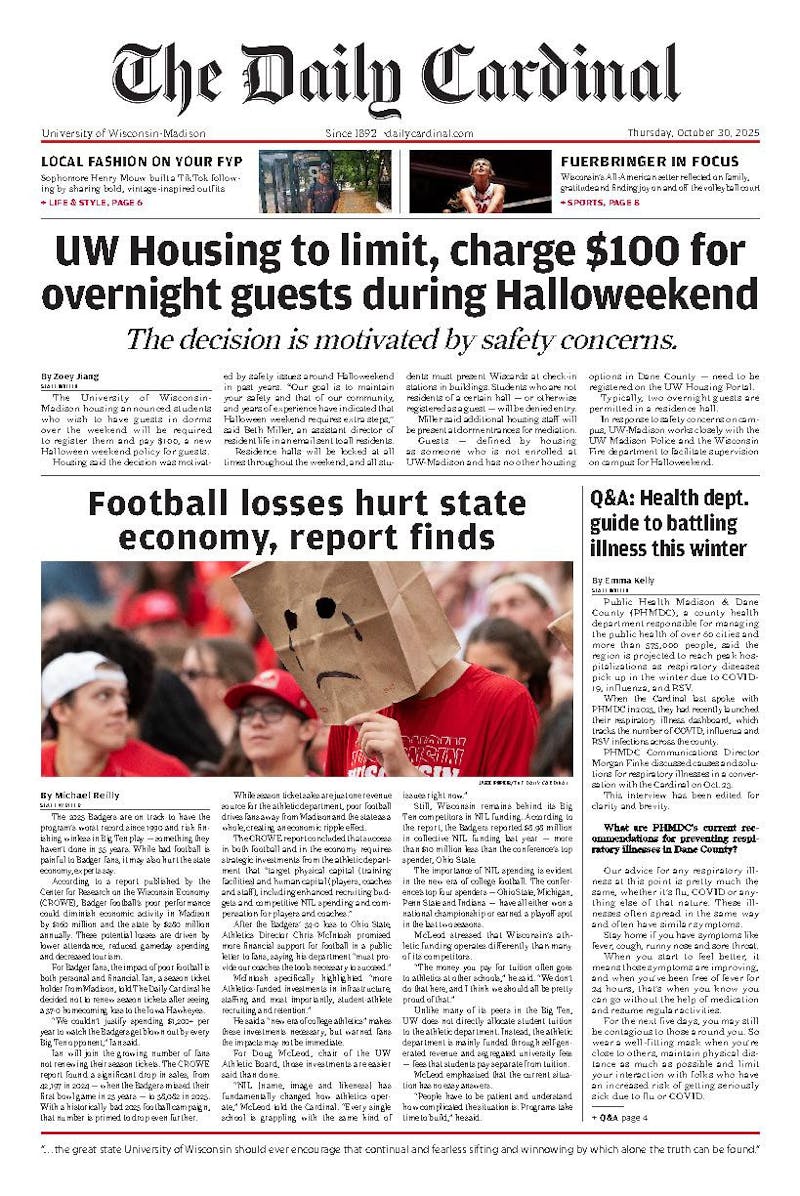In 1881, America's 20th president, James Garfield, was shot and killed, famous cubist artist Pablo Picasso was born and construction of the Washburn Observatory of UW-Madison was completed. Today the same telescope that was used for research of the solar system until 1951 is open to the public and to university astronomy students to explore the universe.
Jim Lattis, of the astronomy department, said the telescope is not the only thing to have remained unchanged.
'[The observatory] is open to the public the first and third Wednesday of each month, weather permitting,' he said. 'It's been that way since the observatory opened 120 years ago.'
The observatory is open every Wednesday during the summer.
At the time of its construction, the observatory contained a 15.6-inch refractor, making its telescope the third largest in the nation. The original funding of the project comprised roughly one-seventh of the state budget when money was apportioned for it by Governor Cadwallader C. Washburn in 1876.
Since 1951, when a new research observatory for UW-Madison was built in Pine Bluff, the Washburn Observatory has served as an instructional tool for undergraduate and graduate students alike.
'There's as many as five classes that will use the observatory at one time or another,' Lattis said.
Astronomy graduate student Jennifer Hoffman said the handling of small group tours and the nights the observatory is open to the public are an excellent way for graduate students to interact with the community.
'It's a really good way for us to reach out to the public,' she said. 'Sometimes scientists forget the people who fund them.'
When guests arrive at the observatory, they are stepping into a place basically unchanged for decades. The building's antiquity caused a shutdown of the observatory a few years ago when the gears used to open the dome broke down.
'It took a couple of months [to find the parts],' Lattis said. 'Basically, we couldn't open the dome at all to look at the sky.'
Lattis explained that the telescope, for which the only change has been its paint color'a light blue now instead of its original dull gray'is best used for viewing objects within the solar system.
Star clusters and nebulae, along with the moon and Jupiter's moons, are popular sights during public nights, according to the department.
'We can look at star clusters tens of thousands of light years away,' Lattis said.
The images seen through the telescope are unbelievable at times, according to Hoffman.
'You look through and say 'That's not true; that's not real,'' she said. 'It's like somebody put a slide in the telescope.'
Hoffman said she enjoyed expanding the public's horizon.
'The best thing is showing people who have never experienced it before and watching their reactions,' Hoffman said. 'I think it's a really amazing resource on campus. It's something everyone should experience.'





